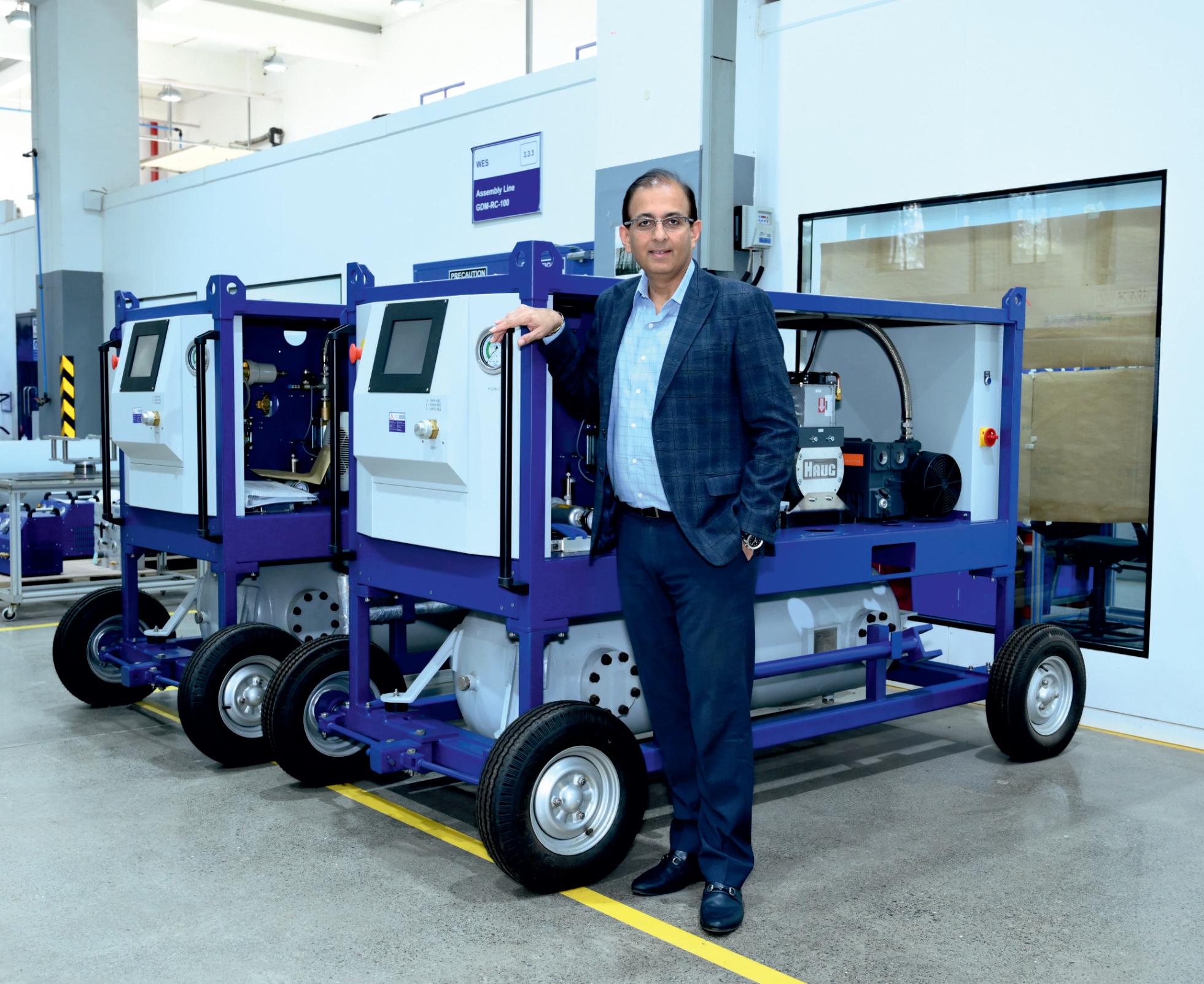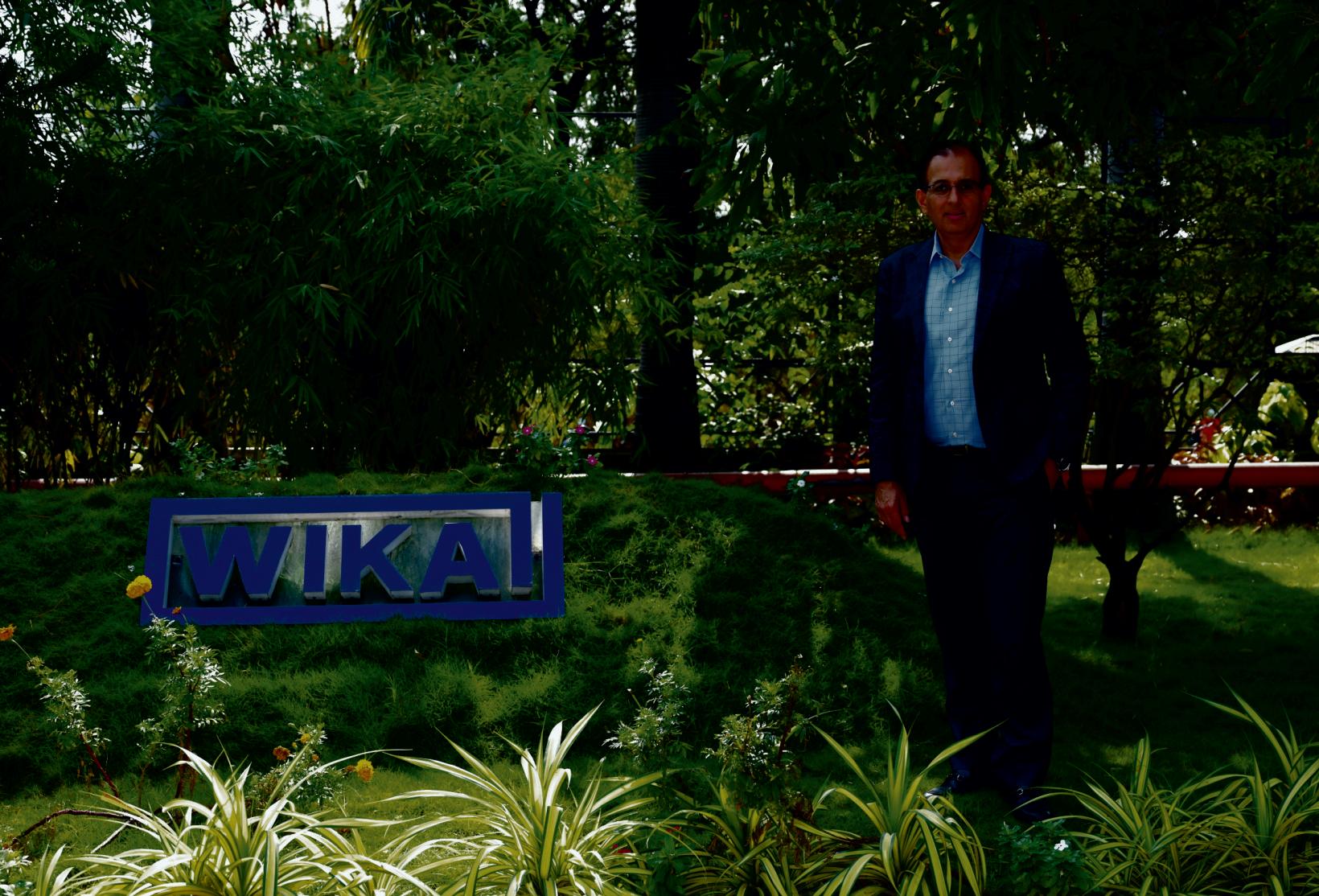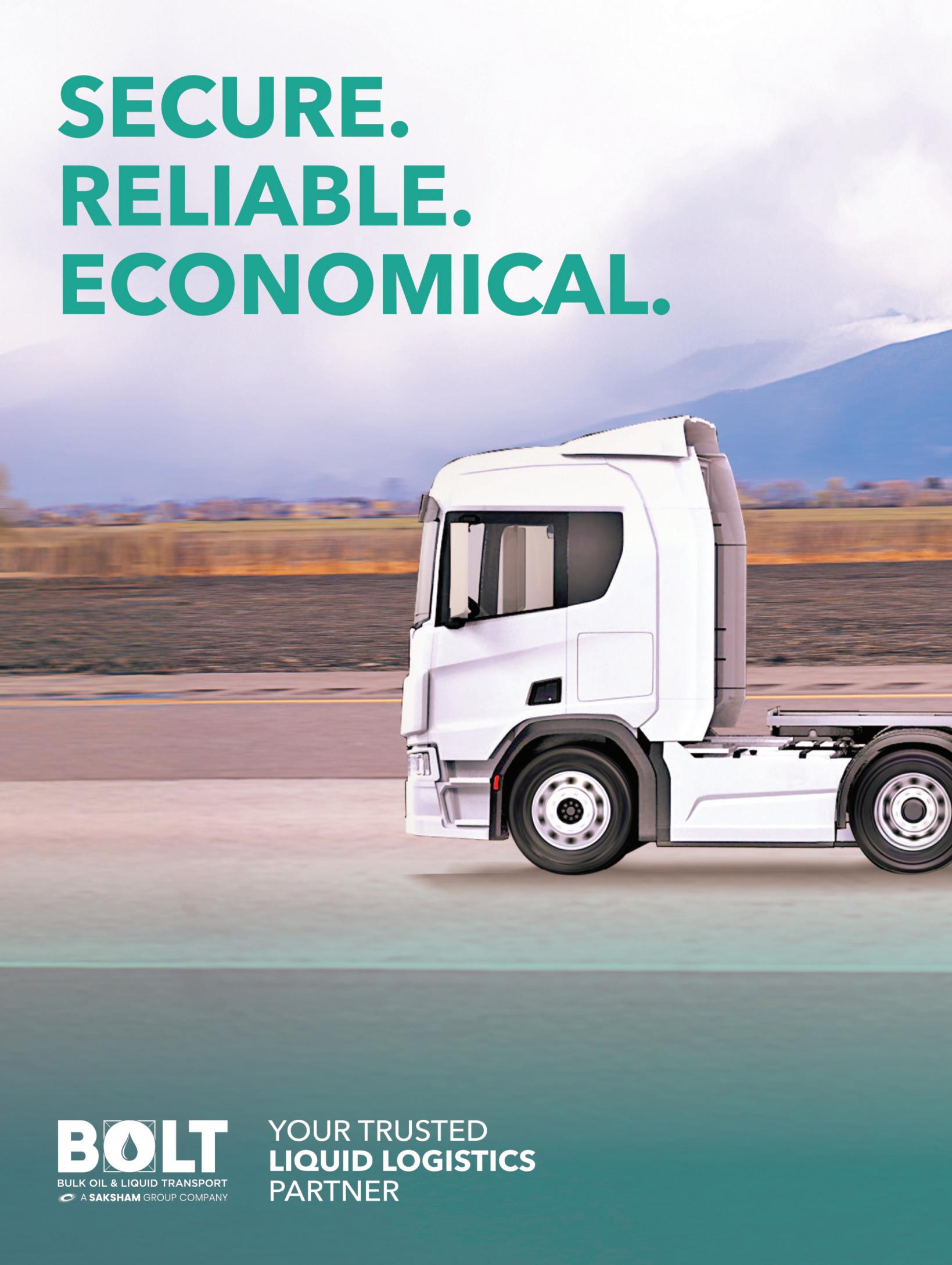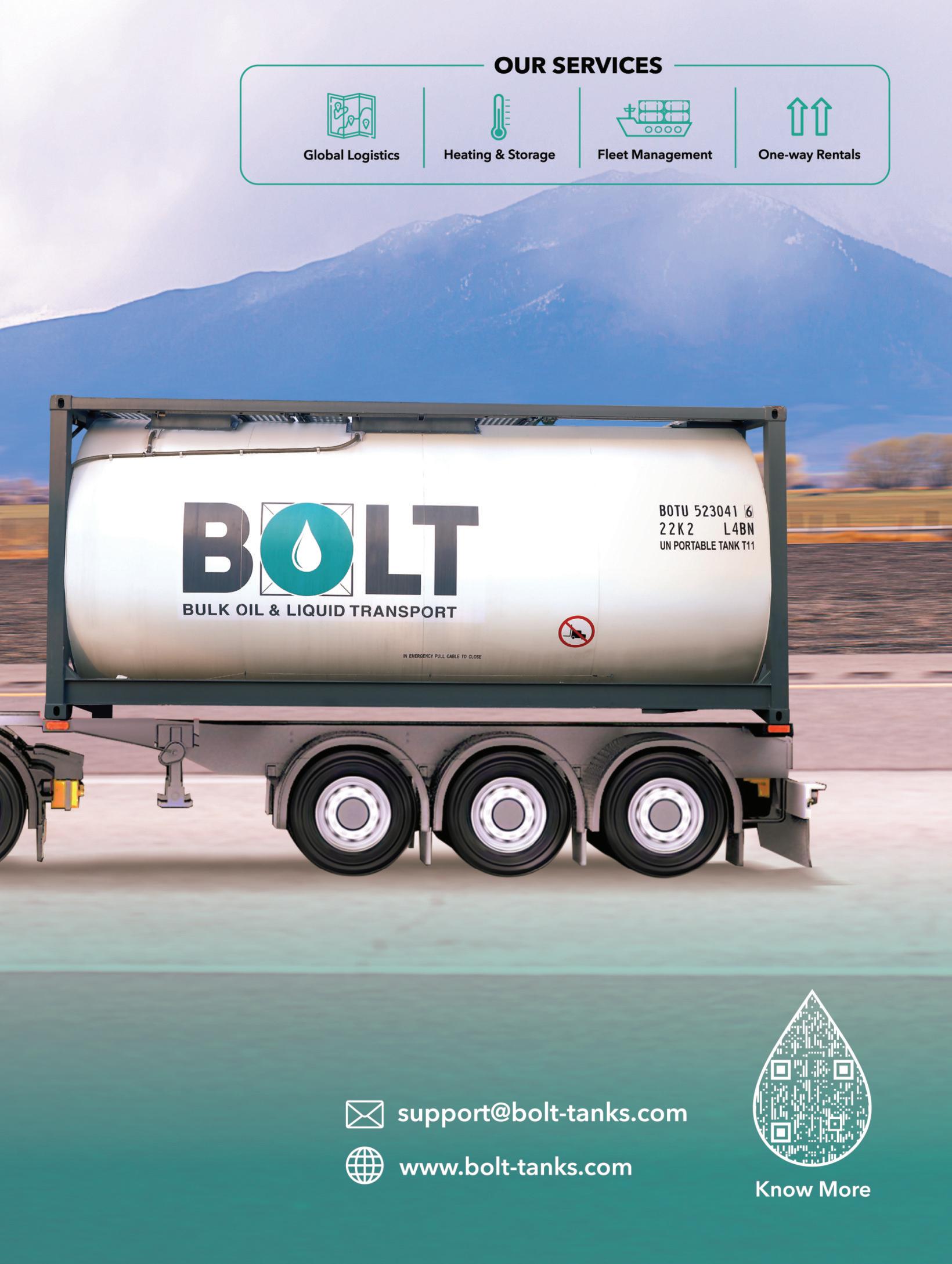



































Inaworldwherechangeistheonlyconstant,leadershipisbeingredefinednotbytitles,butby
impact.InsightsSuccessrecent, The Most Dynamic Leader to Watch in 2025 editionseeksto spotlightindividualswhoarenotonlyembracingthisevolutionbutactivelyshapingthefuture throughvision,innovation,andresilience.Amongthem,onenamestandsoutGauravBawa
Witharemarkableblendofstrategicforesightandapeople-firstapproach,Gauravexemplifies whatitmeanstobeadynamicleaderintoday’sfast-paced,interconnectedglobaleconomy.His careerjourneyisnotjustatestamenttoprofessionalsuccessbutareflectionofthepowerof authenticleadershipgroundedinpurposeandadaptability Whetherdrivingtransformationin businessormentoringthenextgenerationofchangemakers,Gaurav’sinfluenceextendsfarbeyond boardroomwalls.
Inthisspecialfeature,wedelveintothemilestones,mindset,andmotivationsthatdefinehis leadershipstyle.Weexplorehowhecontinuestoinnovateinthefaceofcomplexity,inspires throughaction,andremainsdeeplycommittedtovaluesthatbuildlastingorganizationalculture.
Asyouturnthepagesofthisedition,weinviteyoutonotonlywitnessthejourneyofGauravBawa buttoreflectonwhatdynamicleadershipmeansinyourownsphereofinfluence.Becausethe futureisn’tjustledit’sinspiredbythosewhodaretothinkdifferently
Happy Reading!

-Alaya Brown

Gaurav Bawa
Building Bridges of Innovation Between Technology, Industry, and People
Advances in Electronic Test Instruments for 5G Network Validation
Wireless Communication Protocols for Industrial Measurement Devices in Smart Factories

Art
Business
Business
Digital
Co-designer
Marketing


























It’s about being better than I was yesterday. This outward-looking passion for growth be it in teams, systems, or self has been a recurring thread in my journey.

Inperiodsofswiftchange,themostlastingimpressionare frequently left by those who subtly reorient the path ratherthanvyingforattention. Gaurav Bawa isoneof the selected few leaders who is successful in blending traditional principles with contemporary tactics, striking a balancebetweentraditionandinnovationinawaythatseems bothappropriateandessential.
Growing up in a setting influenced by the emergence and demise of conventional family enterprises, he focused on discoveringearlyonthatsuccessisn'tsimplyinherited;rather, it is redefining with every generation. Instead of revolting, deliberate divergence an acceptance of quality, systems thinking, and the discipline of continuous improvement is followed. These ideas, which were first sown in classrooms and then grown on manufacturing floors, have subsequently developed into a forward-thinking yet grounded leadership style.
Today, Gaurav is leading four production facilities, and a forward-thinking agenda based on operational excellence, sustainability, and a people-first culture, serving as the impetusbehindWIKAIndia'sremarkabledevelopmentstory. HistransitionfromaSixSigmaexperttoabusinessstrategist showcases a remarkable agility, demonstrating his ability to change course with intention while steadfastly maintaining hismoralcompass.

The way he is developing it with clarity in ambiguity, sensitivityincrises,andaquietconfidencethatleadershipis more about direction than dominance may be what is resonating most. Acknowledging by both academics and industryforhisachievements,heiscontinuingtobealeader who is listening as much as he is leading, a student of development,andanurturingoftalent.



ForGaurav,theseedsofleadershipweresownintherichsoil offamilylegacyandpersonalreinvention.Hedepartedfroma family with strong business roots in sectors such as construction, glass, and plywood, and his early life was immersed in entrepreneurial spirit However, as times changed and new business models deteriorated, so did the family'spath.


“It was my mother who was the quiet architect of transformation in our household. She encouraged us to look beyond the traditional family trade and create our own paths rootedineducationandprofessionalexcellence.Shewasvery clear in encouraging our generation to carve our own paths, crediting her clarity as a defining influence in my life.” he says.

That pivotal family moment led him from the corridors of Modern School, Barakhamba Road a lineage passed down from grandfather to father to son to the engineering classrooms of a Birla institute in Gujarat, and later, to the rigorous business halls of IMT Ghaziabad.At IMT, Gaurav firstencounteredtheprinciplesofTotalQualityManagement, sparking a long-lastingfascinationwith excellence,process, andprecision.
Gaurav's corporate journey began with Eicher, a company knownforitsdeepinvestmentinpeopleandvalues.Starting in the Total Quality Management cell, he was assigned to a pan-Indiarolestudyingthebestpracticesandinteractingwith some of the most talented individuals in the Indian industry. Thisexposurewasbothexpansiveandhumbling,resultingin his early career ethos: observe, absorb, and never stop learning.
Ashift to manufacturing operations at Eicher's facility near Indore followed, cementing his on-ground knowledge of productionandoperations.However,fateintervened.
The death of his father brought him back to Delhi, and to a newopportunityatGE.
“Joining GE as a Six Sigma Black Belt, I was introduced to theartofchangeleadershipinitspurestform.Wehadtodrive high-valueprojectswithoutanydirectauthority Itwasduring this time that I took on a project of staggering complexity: relocating an entire manufacturing operation from France to India.”heexplains.Withminimalpreparationandunderhigh stakes,heledamulticulturalteamtoclosetheFrenchfacility andshiftitscapabilitiesseamlesslytoPondicherry-achieving zerodeliveredPPM(partspermillion)toglobalcustomers.It was a career-defining moment that showcased his ability to managecomplexity,navigaterisk,andunitepeoplearounda sharedpurpose.
From there, Gaurav’s ascent at GE was rapid. He became a Master Black Belt, leading Six Sigma and Quality across India. However, it was a surprising step in the direction of SalesandMarketing.Inasingle,boldmove,heshiftedfrom beingtheHeadofQualitytoleadingbusinessdevelopment.
“Itwasaboutmylong-termcareervision.Youhavetobeclear about what you want, and plan your moves at least 2-3 years in advance. That clarity of vision, a theme that echoes across mycareer,eventuallyledmetoWIKA.”hesays.


Leadership, for Gaurav, isn't about controlling people, it's about inspiring them. It's about clarity, connection, and purpose.

Startingwiththeleadershipofasmallerbusinessunitnamed WIKAProcessSolutions.Hehassincerisentohelmtheentire India operation, overseeing four manufacturing plants and guiding strategic growth. Under his leadership,WIKAIndia notonlyscaledoperationsbutalsoemergedasakeyplayerin India’sindustrialinstrumentationspace.
Yet, Gaurav’s story isn’t just one of boardrooms and bottom lines.It’salsooneofbalance,perspective,andvaluesdeeply rooted in family and friendship. He is fiercely committed to maintainingawork-lifebalance.
“At work, I’m intensely focused. I make everyday count by driving decisions that push the organization forward. But whenI’mawayfromwork,Itrulydisconnect.
Travel, social bonding, and family traditions like annual spiritual trips or extended family vacations aren’t just downtime for me; they’re part of my life’s rhythm, offering joy andgroundingthatrejuvenatemyleadership.”hesays.
His motto is to celebrate life to the fullest. Whether with college friends or schoolmates, he ensures that life’s milestonesbigorsmallarealwaysacknowledged.




The COVID-19 pandemic was a crucible for leaders across industries.ForGaurav,itwasanopportunitytoleanintohis values.
“Clear communication and transparency were nonnegotiable. During the crisis, WIKA India chose not to cut salaries going against the tide and even provided salary increments. The result was profound: a renewed wave of employeecommitmentandorganizationaltrust.”hesays.


He has a huge amount of respect for his employees because accordingtohimwhentheworldwasuncertain,theirpeople gave more than 100% reflecting the rare emotional intelligenceandempathythatdefinehisleadership.
Gaurav’sbusinessappetiteisn’tdrivenbyambitionalone,but byahungerfordisciplinedgrowth.
“It’s not just about doubling business; it’s about ensuring you havetherighttalent,systems,andstructurestosustainit.


At WIKA, this approach translated into operational excellence underpinned by rigorous execution and continuouscapabilityupgrades.”hesays.
It’s no surprise, then, that under his leadership,WIKAIndia has carved a name for itself as a growth engine within the globalWIKAfamily
When asked what truly drives him, Gaurav's answer is unpretentious: personal improvement “It’s about being better than I was yesterday This inward-looking passion for growth be it in teams, systems, or self has been a recurring threadinmyjourney.”hesays.
That self-awareness extends to acknowledging his initial discomfort with public speaking. “It wasn’t a strength initially But I worked on it consistently, and it became a skill.” he says. His humility and candor serve as powerful reminders that great leaders aren’t born perfectly; they’re forgedincommitment,feedback,andperseverance.
Gaurav'scontributionshavenotgoneunnoticed.In2023,he was awarded “Best Leader to Watch for 2024” by CEO Magazineand“CEOoftheYear2024”bytheInstrumentation Engineers Club. As a guest speaker at events hosted by VDMA,ChandigarhUniversity,andIED,hehashighlighted themessuchasautomation,sustainability,inclusion,andthe importanceofindustry-academiacollaboration.


Despite these accolades, his leadership is defined more by consistencythanceremony,morebyactionthanopposition.
To those climbing the leadership ladder, Gaurav’s advice is simple yet profound: “Be open to change, define your next movewithclarity,andinvestinholisticdevelopmentphysical, mental, and spiritual. This triad of alignment, I believe, enables resilience and decision-making in the face of adversity.”hesays.
Leadership, for Gaurav, isn’t about controlling people, it’s about inspiring them. It’s about clarity, connection, and purpose.
Whenaskedaboutthemantrathatguideshisgrowth,Gaurav responds with characteristic precision: “Continuous innovation and learning, customer-centricity, and a strong commitment to quality Add that to digital transformation, sustainable practices, and people empowerment and you havetheroadmaphefollowsatWIKAIndia.”hesays.
A leader shaped by tradition but influenced by vision. A strategistwhoneverrevealsthehumanelement.Amanwho, inthesimplestsense,leadsbyexample.In2025andbeyond, GauravBawaisnotjustaleadertoobserve;heisaleaderto understand.











Withtheworldsettlingintothe5Gera,theneedfor increased speeds, decreased latencies, and increased connectivity was the way of the day This advance in communications technology brings with it enormousopportunityonthebackoftechnicalhurdlesonan enormous level Maybe even more so in proving and maintaining network performance Electronic Test Instruments are right at the center of this revolution, having grown in character to meet staggering standards of 5G networks.
Every other generation has been about quicker mobile web, but5Gisnotjustaboutfastermobilewebit'satotalrebuildof network architecture. With mmWave frequencies, Massive MIMO,beamforming,andnetworkslicingcomingintoplay, the5Ginfrastructureisacomplicatedfactortoprove.Eachof these technologies comes with new parameters and performance benchmarks that must be rigorously tested beforedeployment.
ElectronicTestInstrumentsarewherethefocusishere.These are instruments used for testing, simulation, and analysis of variouscomponentsofanetworksothattheperformanceisas perthedemandsrequired.Theevolutionoftheseinstruments has been the backbone behind the successful rollout and optimizationof5Gnetworksallovertheglobe.
Testgearhistoricallycheckedcomparativelystraightforward measuressuchassignalstrength,bandwidth,andlatency But with the arrival of 5G, testing scope and complexity are several times more. Electronic Test Instruments nowadays
must consider elevated frequency bands, complex modulation methods, and requirements for real-time processing.
One of the important advancements has been the incorporation of software-defined instrumentation Such instrumentsarereal-timeconfigurableandadaptable,thereby making it ideal to test out different 5G applications such as IoT, self-driving cars, and smart cities. Not just are these instrumentssmallerinsize,buttheyarealsomorepowerful, allowingfieldengineerstotestremotelywithoutcumbersome apparatus.
Several technological breakthroughs have set contemporary ElectronicTestInstrumentsinthelimelight:
• WidebandSignalAnalysis:5Ghasawiderbandthan its predecessors, notably in the mmWave frequency band. Sophisticated instruments can analyze wideband signalswithbandwidthsofover1GHztomeasurehighfrequencycomponentswithaccuracy.
• Real-TimeSpectrumAnalysis:Thedynamicnatureof 5Gnetworksimpliesthattherehastobearequirement forreal-timemonitoring.Real-timespectrumanalysisis presentlyofferedbytestequipment,whichhelpsinthe detection and correction of faults such as signal interferenceoranomaliesasandwhentheyhappen.
• MassiveMIMOandBeamformingSupport:Testing suchtechnologydemandsequipmentcapableoftesting varioussignalpathssimultaneously.

Equipmentofthenextgenerationhasmulti-antennaand phased-array test capability, providing information on spatialperformanceparameters.
• Over-the-Air(OTA)Testing:Sincethemajorityof5G components operate at high frequencies at which traditional cable connections are impossible, OTA testing had become unavoidable. OTA capability on electronic test equipment has now evolved to evaluate antenna performance, propagation, and end-to-end systemfunction.
• AI and Machine Learning Integration: Some of the newer test solutions employ AI-based algorithms to identify performance trends, pinpoint failure root causes,andoptimizenetworkparametersautomatically. This has significantly reduced trouble-shooting and tweakingtime.
ApplicationofElectronicTestInstrumentisinthewhole5G design and deployment cycle ranging from R&D laboratoriestofieldinstallationandnetworkoptimization.
• In Research & Development: Engineers utilize these toolstosimulatenetworkconditionsandtestprototype hardware in different scenarios. This allows for the detection of possible design defects early in development.
• Network Rollout: Proper testing verifies the infrastructureisregulatorycompliantandperformingas anticipated.Testtoolsareutilizedtofine-tuneantennas, verify signal coverage, and test interoperability among differentnetworkelements.
• For Network Maintenance: Regular testing after deployment is required to guarantee the quality of service. Equipment is used for the detection of issues such as deteriorating signal quality, network traffic, or malfunctioning hardware, in an effort to minimize downtime.
Aside from the wonderful progress, there are still problems. Highlydevelopedtestequipmentcanbeprohibitivelycostly to some small service providers. Test data interpretation is alsocomplexandrequiresskilledpersonnel,andthiscallsfor trainingandmanpowerdevelopment.
Soon, the next-generation Electronic Test Instruments will alsofeatureevenmoreautomation,cloudtestenvironments, and further integration with network management software. With6Gonthehorizon,therewillbeincreasingdemandfor evenmoresophisticatedtestcapability
5Gsuccessistantamounttotheeffectivenessofthehardware used for testing and maintaining it. Electronic Test Instruments have come a long way to respond to the unique requirements of this new-age technology Their evolution parallelstechnologicalleapsinconjunctionwithachangein network design, deployment, and maintenance. As hyperconnectivityprojectsadvancefurther,theinstrumentswillbe constant companions in shaping communications of the future.


Construction of smart factories is re-writing the industrial playbook for efficiency, flexibility, and accuracy At its core is an increasing reliance on industrial measurement instrumentation providing real-time data and intelligence that informs decisions and automates processes. With increasingly sophisticated devices being built, frustration-free and frictionless communication is becoming even more powerful. Wireless communication protocols have become a key facilitator within this environment,providingscalability,quickinstall,andremote monitorability.
There has been traditional wired communication for industries, but with the limitations of cost, flexibility, and scalability.Physicalwirelimitationslimitfactoryfloorlayout andredesignsarecumbersome.Wirelessprotocols,however, provideindustrialmeasurementdeviceswiththeabilitytobe positioned in hard-to-reach or hazardous locations without cablinginconvenience.Suchflexibilityisessentialforsmart factorieswherefloorplanschangewithprocessimprovement andtechrefresh.
Besides, wireless networks are capable of delivering data acquisitionandtransmissioninreal-time,whichofferstimely access to crucial parameters like temperature, pressure, humidity, vibration, and chemical content to engineers and operators.This leads to possibilities for assisting preventive
maintenance, quality monitoring, and performance optimization.
There are several wireless communication standards which have been designed and tailored for industrial application. Each of them has particular strengths and suitability to application.
Wi-Fiisprobablythemostrecognizedprotocolathomeand in industry. Wi-Fi provides high data rates and broad interoperability in intelligent virtual factories. This kind of industrial measurement instrumentation that needs highthroughputcommunications—forinstance,instrumentsused during visual examinations or high-frequency data acquisition—cantakeadvantageofWi-Fi.Wi-Fi,though,is subject to higher interference and might not be the most appropriatechoiceformission-criticalapplicationswhereno networkdesignandsecurityplanningisdone.
Both BLE and Bluetooth are well-suited for near-distance communication and are used extensively in handheld or wearableindustrialsensors.
BLE, specifically, is characterized by its ultra-low power consumption, which is best suited for battery-operated sensors with limited data stream transmission continuously Yet,itsrestrictedrangeanddataraterestricttheiruseinhighspeed,large-scalenetworksofsensors.
Zigbeeisdesignedforlow-power,low-data-ratedevicesand is optimized to create a mesh network. Zigbee supports devices as data repeaters, which actually extends the range and provides redundancy. It is widely used in industrial measurement instruments being distributed sensors in monitoringenvironmentalparameterswithinlargeplants.Its reliabilityandauto-healingfeaturesmakeitagoodchoicefor dynamicandinterference-ladenindustrialenvironments.
LoRaWAN enables long-distance communication with low power usage. It is well-suited to industrial measurement instruments that are geographically dispersed across vast areas of space, such as oil refineries or large manufacturing plants.LoRaWANisoptimizedforsendinglimiteddataover long distances, so it is notably apt for applications like leak monitoring,airmonitoring,andenergyusemonitoring.
WirelessHART is an industrial automation protocol developed specifically for wireless applications WirelessHART is an upgrade to the HART protocol with addedwirelessfeaturesbutretainingbackwardcompatibility withallindustrialmeasurementdevicesbasedonHARTthat are already installed. WirelessHART implements timesynchronized, self-organizing mesh networks that provide data reliability, latency control, and security — all process industry requirements in chemical, food processing, and pharmaceuticals.
With the advent of 5G, new horizons have been created in industrialconnectivity Withultra-lowlatency,ultra-massive deviceconnectivity,andveryhighbandwidth,5Gisgoingto be the impetus of next-generation smart factories. It will support the most demanding applications like real-time analytics, edge machine learning, and mobile robots. For industrial measuring devices, this translates to immediate communicationwithcentralizedcontrollers,facilitatingrealtimeresponseanddecision-making.
Private LTE networks, applied extensively where 5G is not yet widely deployed, offer the same benefits with added controlandsecurity,criticalinregulatedenvironments.
Alongwiththetangiblebenefits,implementationofwireless protocols in the industrial environment is not free of issues. Equipmentinterference,networktraffic,andsecuritythreats havetobeaddressedbypropernetworkdesignandprotocol selection Interoperability among industrial measuring instruments from different companies, which must use proprietarycommunicationprotocols,isalsoarequirement.
Power management is also an aspect to be considered. Most sensors are powered by batteries, and the protocol selection shouldmeetcommunicationneedsagainstenergyefficiency
As more and more manufacturers embrace smart factories, wireless communication in industrial measurement devices will keep increasing Edge computing and artificial intelligence will be even more integrated in sensor systems, powering the pervasiveness of real-time analytics and autonomous decision-making. All this innovation requires notonlythespeedandreliabilityofcommunicationprotocols butalsointelligenceandadaptability
New technologies like Wi-Fi 7, 6G, and ultra-wideband (UWB) will go even further in capability with sophisticated location tracking accuracy and reduced latency communication.
Wirelesscommunicationprotocolsaretransformingtheway industrialmeasurementdevicescommunicatewitheachother in smart factories. They provide unprecedented scalability, adaptability,andreal-timeresponsiveness,allofwhichareof utmostimportancetoindustrialprocessesoftoday.Whereno single protocol can be all things to all places, the correct selection—orset—bestsuitedtotheparticularapplication and setting can really drive enhancement and operational efficiency. With technologies evolving further and factories becoming increasingly integrated, wireless communication will be at the center of this transition, driving industrial intelligenceintothefuture.




www.x.com/insightssuccess

